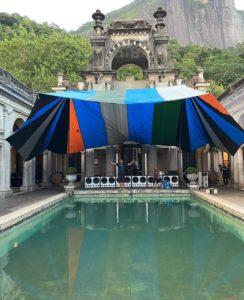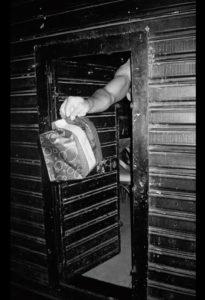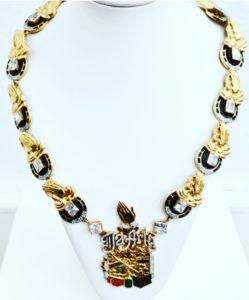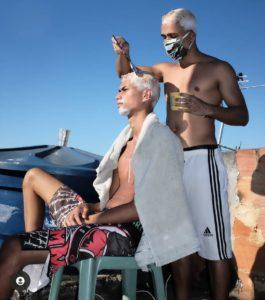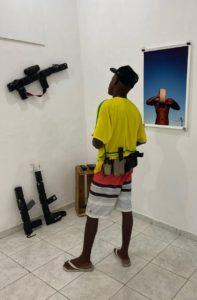Allan Weber.
“Nothing so different for us”, installation, blindex in the gallery hit by a 762 rifle, 120 x 40 cm, 2021.
“Ruler, sculpture”, 30x30cm, 2021.
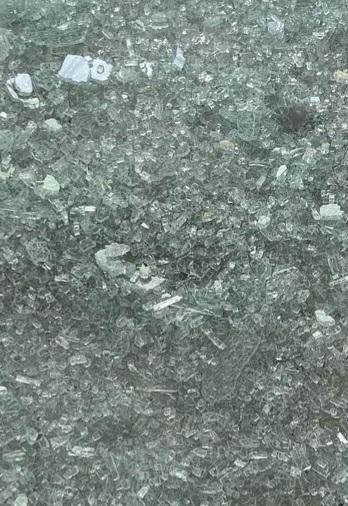
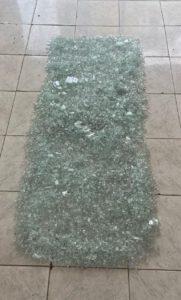
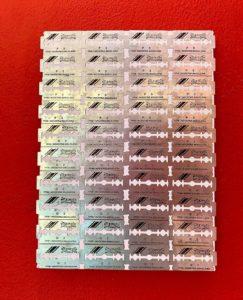
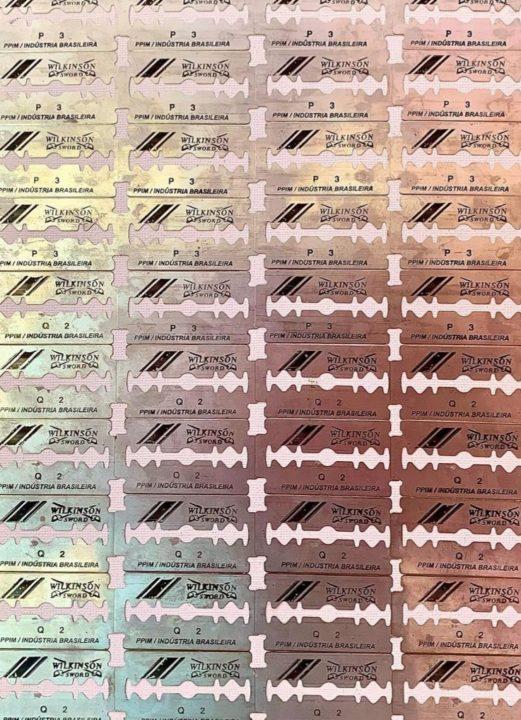
There is a tradition of excellence in Brazilian visual arts and architecture that projects our country's artists and architects onto the international scene: Ligia Clark, Oscar Niemeyer, Ernesto Neto, Lucio Costa, Helio Oiticica, Lina Bo Bardi, Adriana Varejão, Paulo Mendes da Rocha , Letícia Parente, Isay Weinfeld, Beatriz Milhazes and Eduardo Kac are some of the names whose contribution to these disciplines is enormous. It is in relation to this question that we would like to briefly comment on the work of the young artist ALLAN WEBER: his career dialogues in a profound way with both universes, that of contemporary art and architecture.
The French urbanist and philosopher Paul Virilio (1932/2018), in his book “The Critical Space”, points out that one of the characteristics of the contemporary world is the fact that today people are much less residents or inhabitants of a city than interlocutors of a cybernetic process. This is because, according to the philosopher, since the 20th and 21st centuries “the access route to the city stopped being a door or a triumphal arch to become an electronic audience system”. For Virilio “the representation of the contemporary city is no longer determined by the ceremonial opening of doors, the ritual of processions, parades, the succession of streets and avenues: urban architecture must, from now on, relate to the opening of a technological space-time” (a time marked here by the advent of the hegemony of electronic interface devices such as cell phones, surveillance cameras, social networks, applications, etc.). In this way, residents of megalopolises begin to have a much more passive, voyeuristic relationship with the city, rather than the city of participation and integration. ALLAN WEBER's work subverts Virilio's observation.
The artist creates events-in-the-form-of-works that, in addition to interfering with the architecture and art of Rio de Janeiro, neutralize the growing “opacity” of its inhabitants-interlocutors, placing them once again FACE-TO-FACE with the city. This is no small thing. It is not the privilege of Rio de Janeiro to “become agglomeration”, but rather the destiny of the planet’s large, important cities: ALLAN WEBER’s gestures take on an enormous dimension as exemplary of the inhabitants’ “return” to the city. His works mix elements that always put the city in question. The work “Nothing so different for us”, a recent acquisition from the CALMON-STOCK COLLECTION, is an example. It is a sculpture/installation made up of hundreds of shards of glass that stretches across the floor: the fragments belonged to a blindex door of the 5 Bocas gallery hit by a 762 bullet during intense shooting in Brás de Pina, where the gallery is located . According to Alan, the shot probably came from a rifle of the same caliber.
The transformation of this unprecedented event into a work of art gives food for thought. The blindex, an architectural element of the white cube, as a piece of the gallery’s shot “body”, what is it? Is it still the gallery? Or a gallery transformed into an art mausoleum? Is it performance or sculpture? Other works by ALLAN WEBER follow the same path, such as the large funk dance tent stretched across the pool in the majestic Parque Lage: is Gabriella Besanzoni Lage's atrium still a palace? Or is it part favela? Is Galeria 5 Bocas, a moving work according to Allan Weber himself, architecture (white cube) or artistic performance? What can we say about the series “There is a whole life that you don't know” (sic), a historic moment of the pandemic recorded in 2020 by ALLAN's camera on the streets of a Rio de Janeiro turned into a ghost? Another acquisition from the CALMON-STOCK COLLECTION is the work “Régua”, a sculptural set of razors that alludes to young people who “cut their hair with a ruler”, that is, with a razor – for this reason they are identified as a subculture (especially by police officers). ). According to ALLAN WEBER, the idea that interests him is that of “cutting”.
